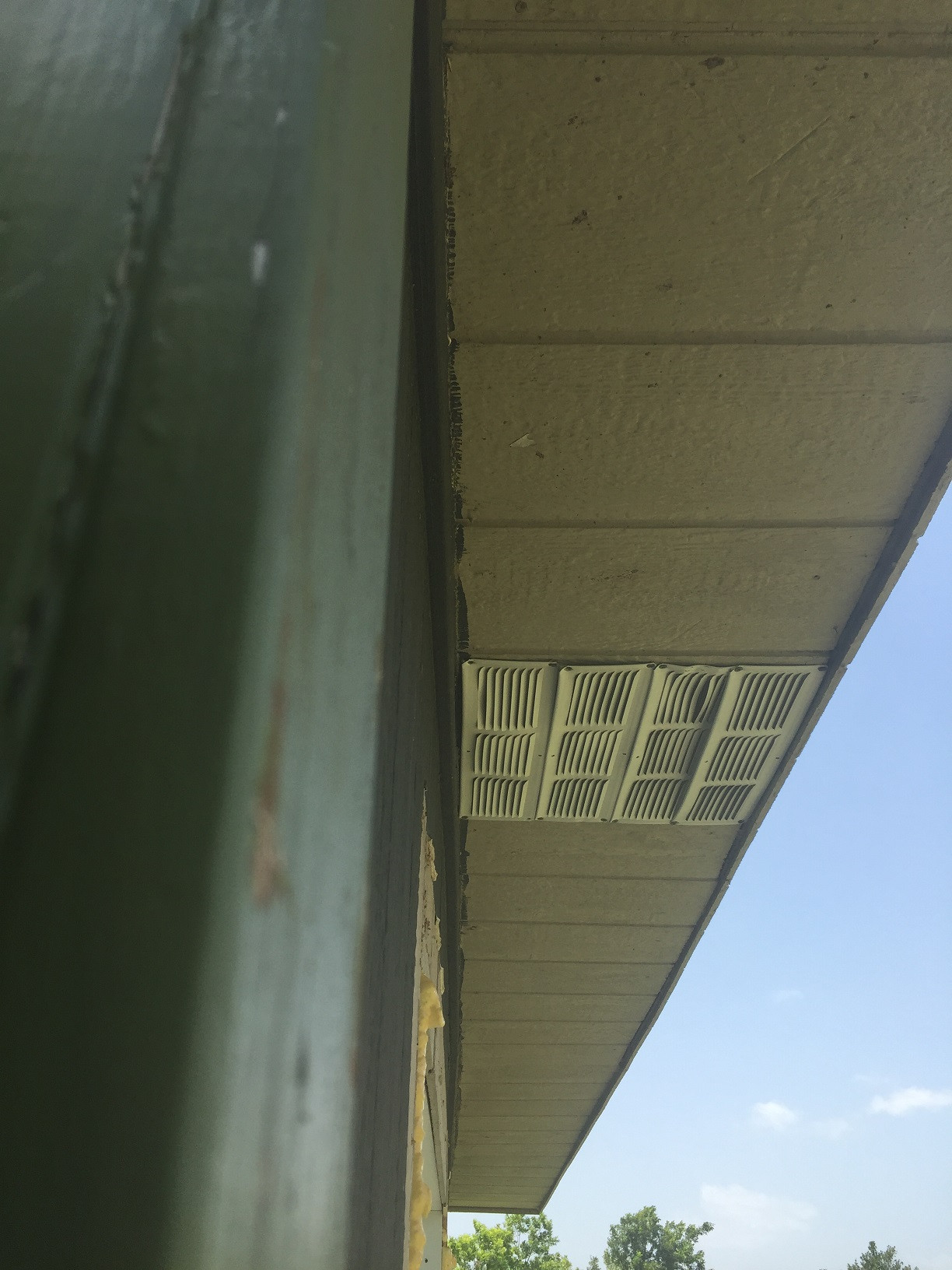TL;DR
Can I fix the sag by slowly jacking up the ridge, simultaneously tightening some steel cables attached to the top of each wall?
Measuring between the top of the wall and the top of the ridge, I see about a 3.75" dip in the middle.
Details
I have a 16x12 shed - the Home Depot variety - that came with the house when we moved in 4 years ago. I'm guessing the shed is about 10 years old.
The roof is sagging a few inches in the middle:
Also notice the eaves are bowed upward in the middle. To me, this indicates that, as the ridge 2x4 has sagged, the bottoms of the joists have pushed outward. Thus, the wall acts as a sort of fulcrum, and the part of the rafter that goes past the wall, supporting the eaves, gets lifted.
It also looks like the walls have bowed outward just a bit:
(Please no comments about the horrible attempt at adding a soffit vent. It's getting replaced.)
And, here's a shot of what the inside looks like:

Note that the long, newish 2x4s in the picture are not attached to anything - I just set them up there temporarily to get them out of the way. I intended to use them as joists, which are sorely lacking in this structure.
So, my thought was this, which may be completely insane as it's cobbled together from a little physics and engineering background, Internet "research," and a working knowledge of what's available at the local Home Depot and Tractor Supply.
Attach braided steel cable along the short span (perpendicular to the roof ridge), between bottoms of the rafters, about every other rafter (which are on 24" centers, unlike the 16" walls. (Might be better to attach to the top of the wall?)
Support the center of the ridge with a 4x4 and a floorjack, probably tying the 4x4 to something to keep it from falling on me when it inevitably slips off of the jack.
in small increments, jack the ridge,
- tighten the turnbuckles to bring the walls in and the rafters up
- rinse, repeat until the sag is gone, or at least far less severe.
- add more joists and rafter ties (which are also completely absent, except for one that is attached way too high to provide much structural benefit.)
Am I way off base here? If so, suggestions on alternate approaches?

